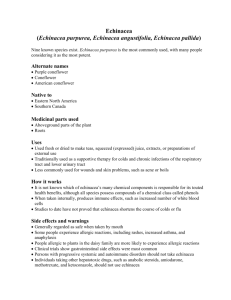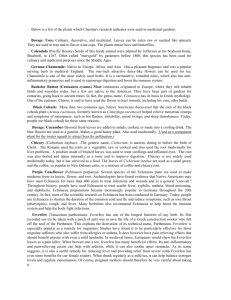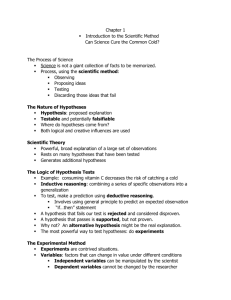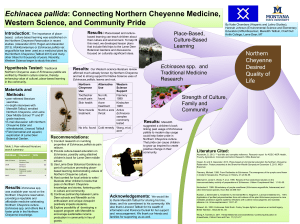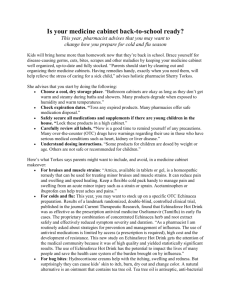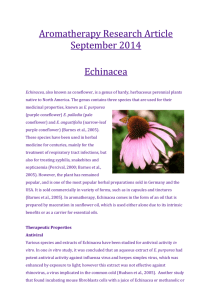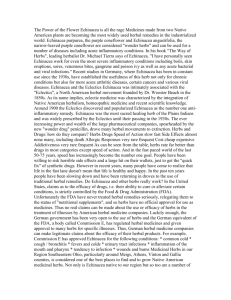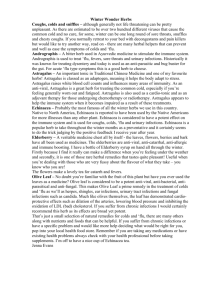Echinacea – more than an herbal remedy
advertisement
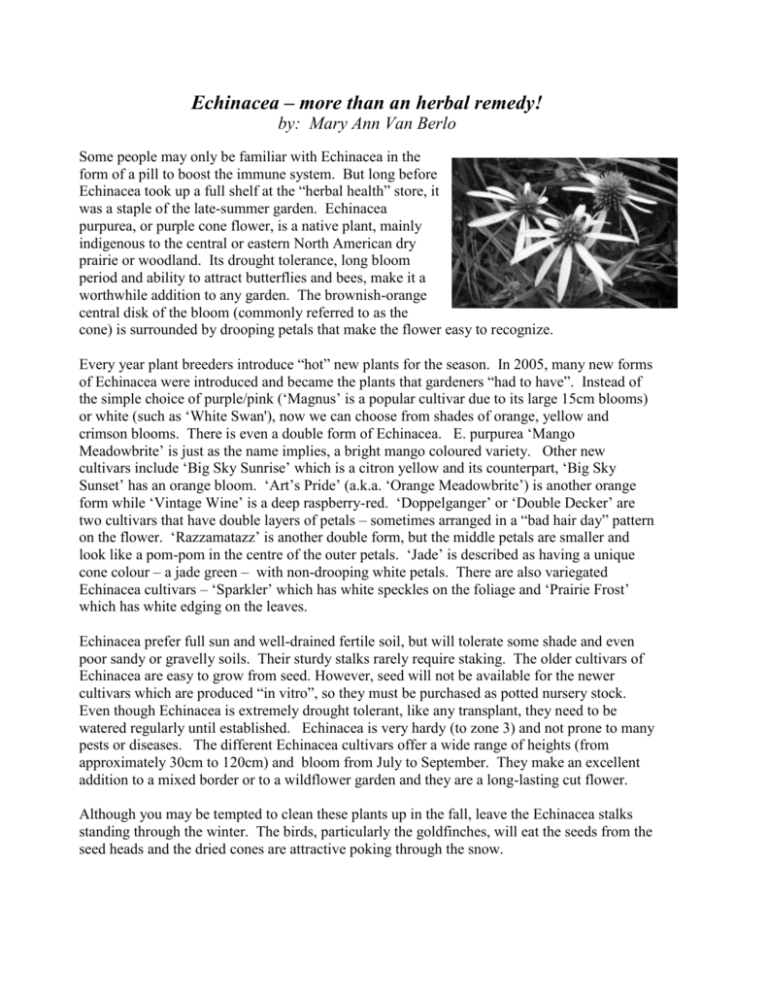
Echinacea – more than an herbal remedy! by: Mary Ann Van Berlo Some people may only be familiar with Echinacea in the form of a pill to boost the immune system. But long before Echinacea took up a full shelf at the “herbal health” store, it was a staple of the late-summer garden. Echinacea purpurea, or purple cone flower, is a native plant, mainly indigenous to the central or eastern North American dry prairie or woodland. Its drought tolerance, long bloom period and ability to attract butterflies and bees, make it a worthwhile addition to any garden. The brownish-orange central disk of the bloom (commonly referred to as the cone) is surrounded by drooping petals that make the flower easy to recognize. Every year plant breeders introduce “hot” new plants for the season. In 2005, many new forms of Echinacea were introduced and became the plants that gardeners “had to have”. Instead of the simple choice of purple/pink (‘Magnus’ is a popular cultivar due to its large 15cm blooms) or white (such as ‘White Swan'), now we can choose from shades of orange, yellow and crimson blooms. There is even a double form of Echinacea. E. purpurea ‘Mango Meadowbrite’ is just as the name implies, a bright mango coloured variety. Other new cultivars include ‘Big Sky Sunrise’ which is a citron yellow and its counterpart, ‘Big Sky Sunset’ has an orange bloom. ‘Art’s Pride’ (a.k.a. ‘Orange Meadowbrite’) is another orange form while ‘Vintage Wine’ is a deep raspberry-red. ‘Doppelganger’ or ‘Double Decker’ are two cultivars that have double layers of petals – sometimes arranged in a “bad hair day” pattern on the flower. ‘Razzamatazz’ is another double form, but the middle petals are smaller and look like a pom-pom in the centre of the outer petals. ‘Jade’ is described as having a unique cone colour – a jade green – with non-drooping white petals. There are also variegated Echinacea cultivars – ‘Sparkler’ which has white speckles on the foliage and ‘Prairie Frost’ which has white edging on the leaves. Echinacea prefer full sun and well-drained fertile soil, but will tolerate some shade and even poor sandy or gravelly soils. Their sturdy stalks rarely require staking. The older cultivars of Echinacea are easy to grow from seed. However, seed will not be available for the newer cultivars which are produced “in vitro”, so they must be purchased as potted nursery stock. Even though Echinacea is extremely drought tolerant, like any transplant, they need to be watered regularly until established. Echinacea is very hardy (to zone 3) and not prone to many pests or diseases. The different Echinacea cultivars offer a wide range of heights (from approximately 30cm to 120cm) and bloom from July to September. They make an excellent addition to a mixed border or to a wildflower garden and they are a long-lasting cut flower. Although you may be tempted to clean these plants up in the fall, leave the Echinacea stalks standing through the winter. The birds, particularly the goldfinches, will eat the seeds from the seed heads and the dried cones are attractive poking through the snow.

